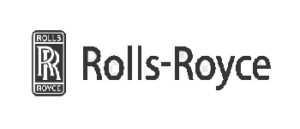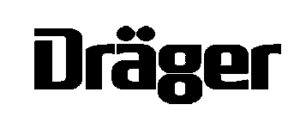Fume Cupboards: A Lab Manager’s Guide to Safe Storage
Fume cupboards, often called fume hoods, are essential safety equipment in any laboratory handling hazardous chemicals. They protect lab personnel from harmful fumes and vapours by capturing and containing them within a controlled environment. But did you know that proper storage within your fume cupboard is just as crucial as its ventilation system? Misuse can compromise safety and even lead to accidents.
In this guide, we’ll share essential tips and best practices for safe storage within your fume cupboard. Whether you’re a seasoned lab manager or new to the role, understanding these principles will help you create a safer, more efficient lab environment.
Who are we? Holliday Fielding Hocking Ltd are one of the UKs most prestigious and well respected, fume cupboard specialists covering the whole of the UK. With a history dating back over 70 years, we understand fume cupboards. Our team of highly skilled fume cupboard technicians provide outstanding service to many of the UKs top laboratories, universities and schools. Our in-house customer service team based in Yorkshire are knowledgeable and friendly and are here to help you get the most from your fume cupboards.
My names, Sean as development manager for the group I project manager some of our blue-chip universities where thousands of pieces of research equipment are maintained annually. If I can help answer any questions, please reach out to me.
Understanding Chemical Compatibility
Not all chemicals are created equal, and neither are all fume cupboards. Before storing anything in your fume cupboard, consider these factors:
- Types of Chemicals: Identify the specific chemicals you’ll be storing. Some chemicals are highly reactive or produce corrosive fumes, requiring a specific type of fume cupboard.
- Fume Cupboard Design: There are two main types: ducted (vented outside) and ductless (filtered). Ducted fume cupboards are generally more versatile but require proper installation and maintenance. Ductless fume hoods are suitable for less hazardous materials but require regular filter changes.
- Safety Data Sheets (SDS): Always consult the SDS for each chemical. It provides crucial information on safe handling, storage, and compatibility with different materials.
Safe Storage Practices for Hazardous Materials
Follow these guidelines for safe storage within your fume cupboard:
- Positioning: Store materials at least 150mm from the sash opening to maintain proper airflow and containment. Larger items should be placed at the back, smaller items in front.
- Avoiding Overcrowding: Limit the amount of material stored to what is necessary for immediate use. This ensures efficient airflow and minimises the risk of spills or reactions.
- Containers: Use appropriate containers for each chemical, ensuring they are tightly sealed.
- Labelling: Every container should have a clear label identifying its contents, hazards, and responsible personnel.
- Emergency Preparedness: Familiarise yourself with emergency procedures in case of spills or accidents. Have spill kits readily available and know how to shut off the fume cupboard in an emergency.
Factors Affecting Storage in Fume Cupboards
Proper storage in your fume cupboard isn’t just about organising materials. These factors also play a crucial role:
- Airflow and Face Velocity: The speed at which air is drawn into the fume cupboard (face velocity) is critical for containment. It should be within recommended limits, typically 0.3-0.5 m/s.
- Temperature and Humidity: Extreme temperatures and humidity can affect the performance of both chemicals and the fume cupboard itself. Maintain a stable environment within the recommended range.
- Nearby Equipment: Avoid placing large equipment near the fume cupboard, as it can disrupt airflow and compromise containment.
Best Practices for Organising Your Fume Cupboard
Implementing these best practices will help you create a safer, more organised workspace:
- Designated Zones: Create a 150mm equipment-free zone at the front of the cupboard to ensure unobstructed airflow. Secure lightweight items to prevent them from being drawn into the ventilation system.
- Cross-Contamination Prevention: Store chemicals and materials in a way that prevents cross-contamination. Group similar items together and use secondary containment for spills.
- Inventory Management: Maintain an up-to-date inventory of all stored materials, including their location and expiration dates. This ensures you always have what you need and can quickly identify any potential hazards.
Work With Holliday Fielding Hocking?
At Holliday Fielding Hocking Ltd, we understand the importance of a safe and efficient lab environment. With over 70 years of experience, we offer a wide range of high-quality fume cupboards to suit your specific needs. Our expert team provides full UK coverage for installation, maintenance, and fume cupboard servicing, ensuring your fume cupboards are always compliant and operating at peak performance.
We also offer a selection of budget-friendly refurbished fume cupboards, perfect for start-up’s and labs with limited budgets. Your safety is our priority, and we’re committed to providing you with the best possible service and support.
Conclusion
Proper storage within your fume cupboard is a critical aspect of lab safety. By understanding chemical compatibility, following safe storage practices, and implementing best practices for organisation, you can create a safer and more efficient lab environment.
If you have any questions or need assistance in choosing the right fume cupboard or implementing safe storage practices, our team at HFH is here to help. Contact us today and let us help you create a safer, more productive lab. Consider visiting our website https://www.labfumecupboards.com to read our other articles or to learn more about Holliday Fielding Hocking Ltd.




